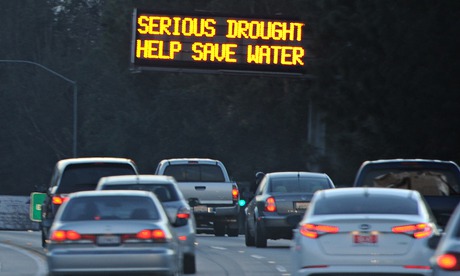By Seth Nidever
Seems like everybody is jumping into the red-hot California water debate.
Ever since Gov. Jerry Brown announced on April 1 that cities like Hanford and Lemoore would be forced to conserve in a big way to cut the state’s water use by 25 percent, the accusations have been flying, with major non-California blogs, newspapers and pundits jumping into the ring last week and asking whether California agriculture – the largest private source of jobs in Kings County and a $45 billion industry statewide – is sharing the pain.
That, in turn, has sent agriculture into full defense mode, with trade and advocacy groups churning out press releases and fact sheets purporting to set the record straight.
Just last week alone, Carissa Sauer, spokeswoman for the Almond Board of California, sent out multiple emails to the Sentinel and other media outlets. The emails offered a robust affirmation of almonds against critics who say the nuts are water hogs that suck up too much out of the state’s precious-but-dwindling aquifers.
Sauer nearly apologized in a final email on Friday, promising that it would be “the last email I send you this week.”
So why all the fuss?
Part of it stems from the high value California voters place on environmental preservation. Poll after poll shows Californians overall strongly support ecosystem protection laws – including the ag pumping limitations from the Sacramento-San Joaquin River delta that Kings County agricultural leaders often criticize.
As a result, according to the state’s Department of Water Resources, about half of California’s dammed or controlled water supply is allocated for environmental purposes, with about 40 percent for agriculture and 10 percent for urban use.
Yet, as many point out, almost all of Brown’s mandated cuts announced earlier this month go after the 10 percent urban piece of the pie.
That has put agriculture squarely center-stage, with a blindingly bright spotlight being turned on what farmers do, how they irrigate and how much water it takes to produce each one of the staggering variety of crops churned out by the San Joaquin Valley.
For his part, Brown has defended agriculture, noting that hundreds of thousands of acres have been fallowed and thousands of jobs lost due to the drought.
For Aubrey Bettencourt, executive director of Hanford-based agricultural advocacy group California Water Alliance, all the hubbub represents an opportunity to put the public relations pedal to the metal.
“The Central Valley farmer has to speak directly to the consumer,” she said. “There has to be a more proactive approach from the farming community.”
Bettencourt went on a blitz last week, tweeting multiple times, issuing a press release and doing interviews.
One tweet included a link to a Los Angeles Times graphic showing how much water-per-ounce various foods used. The upshot? Almonds, at 48.6 gallons per ounce, aren’t the worst water-hogging protein source.
According to the graphic, that title goes to beef, which, because of the sheer amount of hay acreage needed to feed cattle, has one of the highest per-ounce water uses out there: 106 gallons.
All this was meant to put in context other stories and blog posts claiming that almonds are Water Enemy #1.
The assault on almonds has prompted some writers – including some not directly tied to agriculture – to pen reality checks. Some articles have suggested that pronouncements about California agriculture from distant publications such as the Wall Street Journal, New York Times and Washington Post reveal an ignorance of the complexities of California’s economy.
“I think you’ve got a lot of reporters that don’t normally cover food and water,” Bettencourt said. “They’re diving in with 10 percent knowledge, which is just enough to be dangerous.”
Medium.com writer Steven Johnson, writing a piece in which he pointed out how many edible goodies California sends to the rest of the U.S. and the world, had this to say:
“The average New York Times reader … from the Upper West Side [of Manhattan] might want to think about the canned tomatoes, avocados and almonds in his or her kitchen before denouncing the irresponsible lifestyles of the California [residents].”
Johnson was actually trying to make a point about how much more water California agriculture uses compared to the state’s urban residents. He is among those calling for wider use of super-efficient irrigation methods.
At the Almond Board, Sauer took a different tack, arguing that almonds have one of the highest dollar values per drop of water of any crop.
By that standard, a recent University of California, Davis, study determined that the state’s almond harvest sustains 97,000 Central Valley jobs.
For Bettencourt, all of this demands that growers engage with others – including those in California’s skeptical environmental community – who are asking painful questions about the challenge drought poses to the state’s natural beauty, food productivity and way of life.
“Drought is turning up the heat big-time,” she said. “You’re seeing the shifting conversation.”



